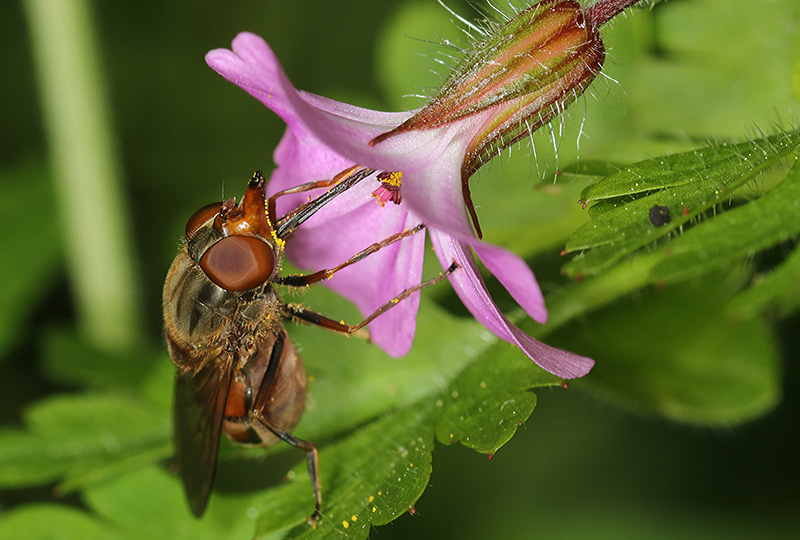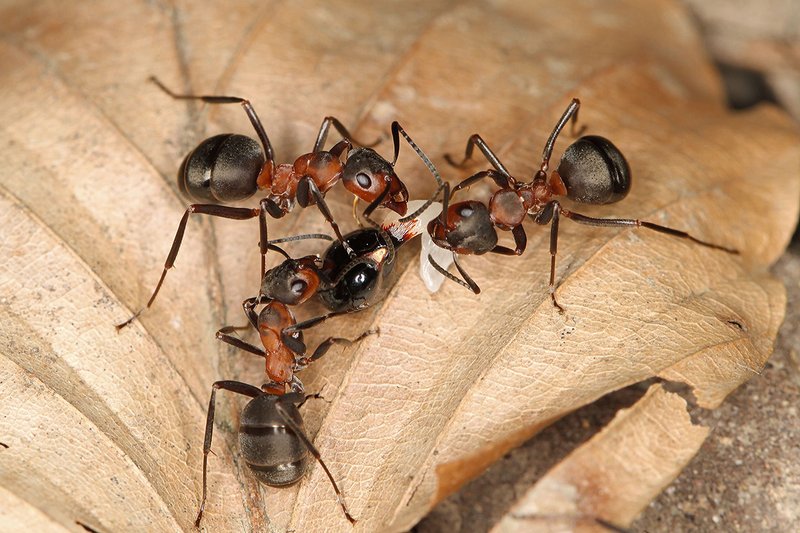If one compares the importance of various groups of organisms from the point of view of the biomass or diversity of species, then the dominance of trees in relation to the biomass is clear but on the other hand the dominance of insects (and fungi) is also clear in terms of the biodiversity.
Pollinating plants and spreading of seeds
Around 80 percent of all trees and bushes are pollinated by insects. Many species of forest trees reproduce using wind pollination. Some however invest a large amount of energy in producing large tempting nectar filled blooms. Examples of these are the Maple, Dogwood, Hawthorne, Horse Chestnut, Cherry, Buckthorn, Willow, Rowan Berry, and Lime. The attracted bees, wasps, flies, beetles and butterflies drink the nectar and eat the pollen. At the same time they carry the pollen to other plants and pollinate their blooms.
Many types of ants play an important role in spreading seeds and fruit from herbaceous plants. There are over 150 known plant species where this is known to occur. Certain plants produce special seeds which are collected and eaten by ants. The seeds which are not eaten germinate along the ant paths or on their "rubbish tips". Such plants have two advantages. Firstly, they can cover larger distances on the windless ground and secondly being near to the ant heap helps protect them from other seed predators.
Conversion of nutrients
Leaf and needle eating insects are regulators of nutrient and sources of energy. The plant material which is eaten by the larva enters the soil already well broken down in the form of excrement from the animals. This excrement is quickly colonised and mineralised by micro-organisms. This leads to a rapid availability of nutrients for plant growth.
Decomposition of wood
In the natural dynamic of a forest there are always dying trees. There are various reasons for this - age, a lightening strike, storms, forest fires, drought, insect infestation, or pathogens. The nutrients and energy which are stored in the bark have to be made available to the soil. The decomposition of wood is more difficult for micro-organisms than that of leaves or herbaceous plants. The bark is difficult to colonise and the underlying body of wood is protected by it from decomposition by fungi.
Freshly dead wood is colonised by a multitude of specialised pioneer insects. They drill holes into the bark or down into the wood and make this substrate accessible to other wood and bark eating insects and fungi. The resulting chippings and excrements can be decomposed by micro-organisms much easier than the hard wood. The decomposition of a tree trunk by microbes alone would take twice as long without the help of wood eating insects. The decomposition of a dead tree can be divided into different phases.
In the first phase the pioneer insects colonise the freshly dead tree. These primary saproxylics are species which generally feed on the bark or the sap wood of specific types of tree. In this category are mainly all the different beetle families, like the bark beetles, the longhorn beetles, the jewel beetles and timberworm beetles. The wood wasps also belong in this category. Because wood is rather meagre in nutrition development of the larvae of the longhorn beetles and the wood wasps often takes many years. Some species take fungal spores with them in order to better utilize the wood. The pioneer insects loosen the bark of the wood and tap into the substrate wood allowing further decomposition to take place. This phase of colonisation normally takes one to two years.
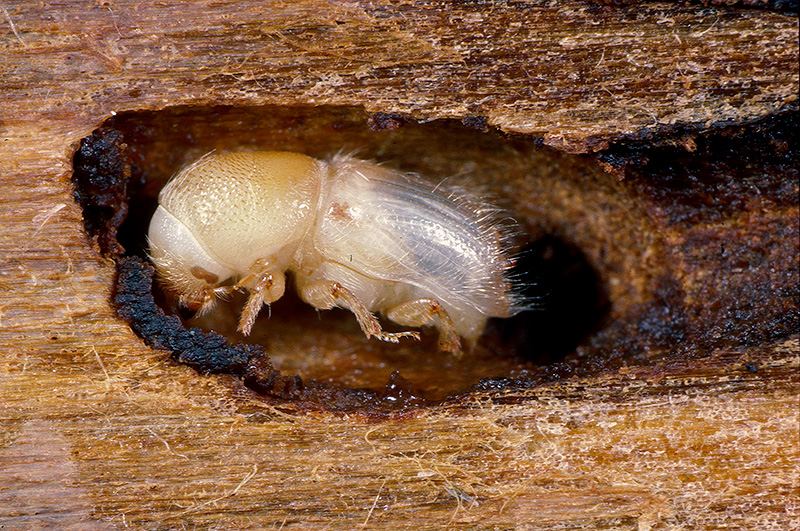
Fig. 3 - The spruce bark beetle is one of the few bark beetles which under ideal conditions can attack living trees and kill them. Photo: Beat Fecker (WSL)
In a second phase the wood starts to decompose. Twigs and branches fall off and the bark detaches itself from the tree. The assemblage of insects changes. Once again it is various groups of beetles which dominate this phase of decomposition: anobiid beetles (furniture beetles), stag beetles, darkling beetles and click beetles. But also various species of flies and midges develop in the tunnels and the mulm. As in the colonisation phase there are also many predatory and parasite insects living in the wood feeding on the actual wood eaters. Bacteria and fungi play an increasingly important role during this decomposition process which lasts many years.
In the final phase, the humification phase, the wood decomposes and slowly turns into soil. Ants, fly maggots, various beetles, mites and springtails now live in the wood mulm. The actual soil organisms (worms, snails, woodlice, various insects) enter the rotting wood. These fauna reduce the particles and increase the accessible surface for microbes, which actually carry out the decomposition of the cellulose, hemicellulose, lignin and pectin. The wood finally becomes raw humus and then "soil".
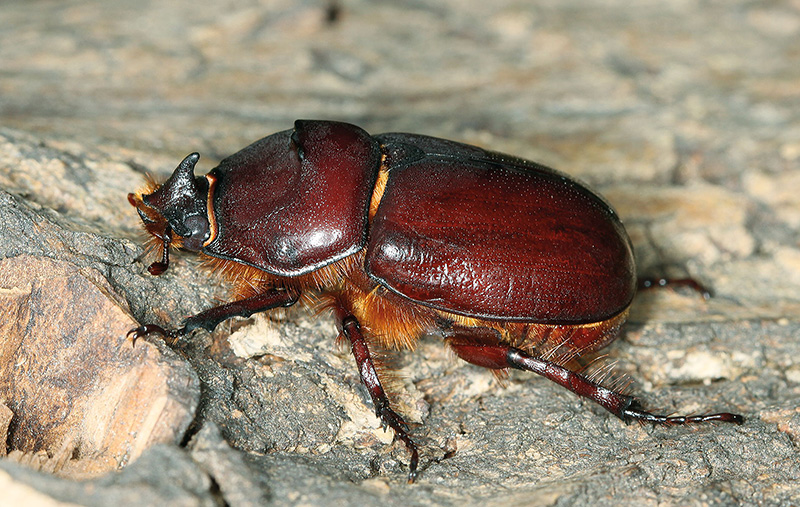
Fig. 4 - The rhinoceros beetle lives in the mulm. This rare species is protected in Switzerland. Photo: Beat Wermelinger (WSL)
Forest health
Various insects are able to colonise weak but still living trees and kill them through their feeding. Well known examples of this are certain species of bark beetles. In this process old, weak or ill trees or trees under stress are eliminated. At the same time however this benefits the overall health and resistance of the forest. Cadavers and excrement from forest animals are also colonised and disposed of by specialized insects such as blow and flesh flies or carrion beetles.
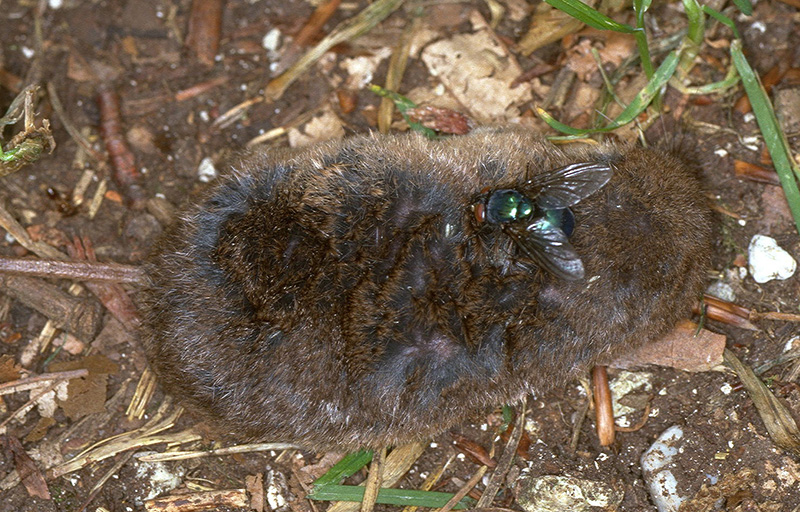
Fig. 5 - Greenbottle larvae develop in rotting carcasses, quickly decomposing excrement and cadavers together with other carrion eaters. Photo: Beat Wermelinger (WSL)
Eat or be eaten: the food chain and regulation
Insects themselves provide food for various groups of animals. Typical insect feeders amongst birds are woodpeckers, tits, warblers, sparrows and cuckoos. Further insect eating vertebrates are mice, shrews, bats, salamanders, frogs, toads and lizards. At the same time many insects also live as predators or parasites off other insects. These can play a major role in regulating outbreaks of pest insects.
Habitat creation
The killing of single trees and the decomposition of wood by insects creates new habitats. Insect-killed trees allow light into the forest so that various herbaceous plants and pioneer wood can thrive and heat loving species of open terrain insects and other animals can find new breeding, eating and living grounds. The elimination of dead wood and the decomposition of wood by insects provide new habitats for other organisms.
Translation: Dawn Meister, Stallikon

